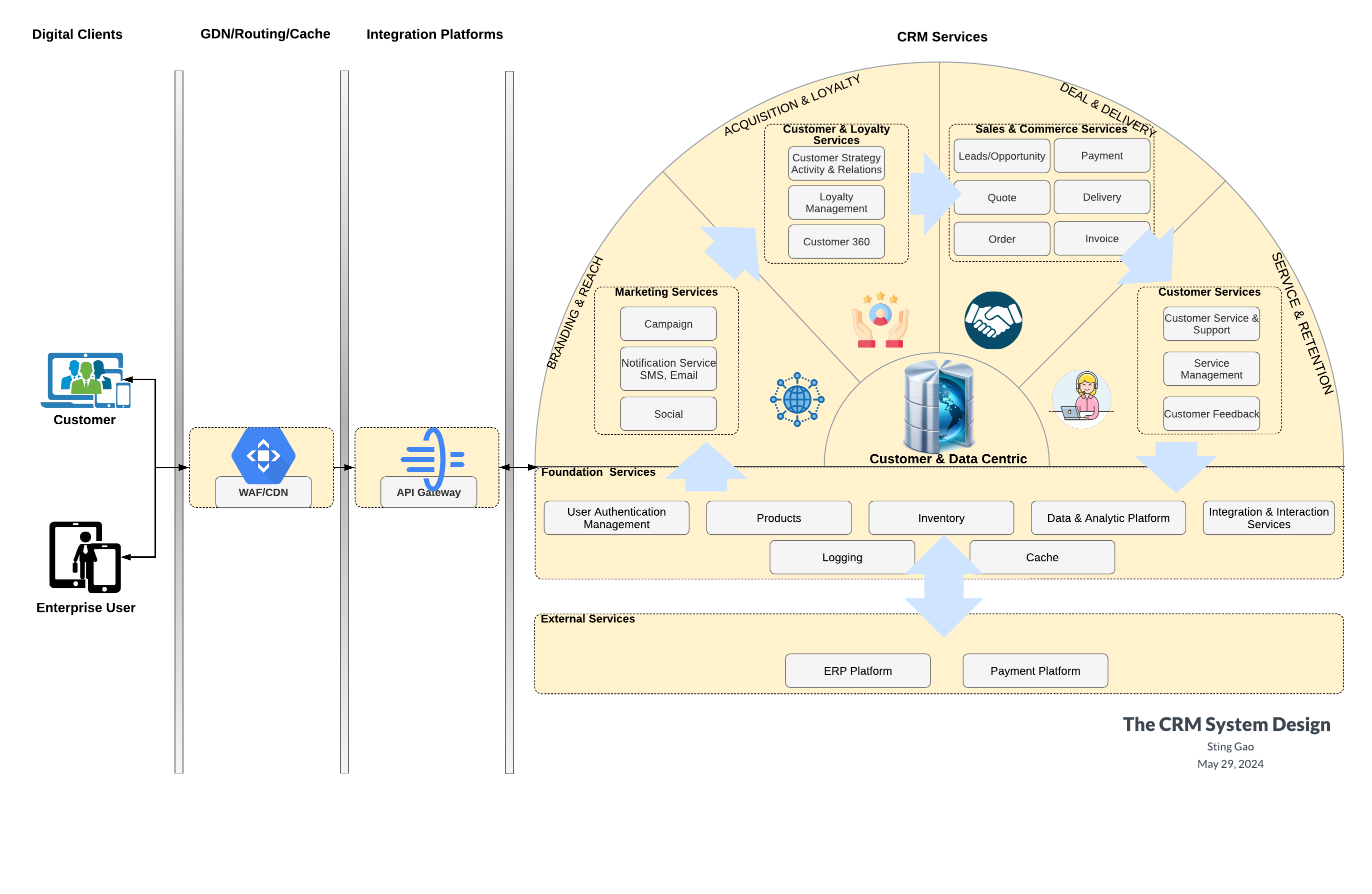CRM(客户关系管理)系统是一种用于管理企业与客户互动的工具,旨在优化客户关系,提升客户满意度和忠诚度。
CRM系统的主要模块及其关系
- 客户管理模块:管理客户信息,支持其他所有模块的运作。
- 销售管理模块:管理销售流程,依赖客户数据,并提供销售反馈。
- 市场营销管理模块:管理营销活动,使用客户数据,并提供营销反馈。
- 服务管理模块:处理客户服务请求,并更新客户信息。
- 分析和报告模块:提供业务分析和报告,从其他模块获取数据。
- 工作流和自动化模块:自动化业务流程和任务,提高效率。
- 集成模块:与外部系统和平台集成,确保无缝协作。
模块之间的关系
- 客户管理为核心:所有模块都依赖于客户管理模块中的数据。
- 数据流动和更新:数据在各模块间共享和流动,确保一致性。
- 协同作用:各模块协同工作,自动化和优化业务流程。
与业务模型的关联
- 业务流程优化:帮助企业优化客户获取、销售转化和售后服务流程。
- 数据驱动的决策:通过数据分析支持业务决策,优化营销和销售策略。
- 客户关系管理:增强管理客户关系的能力,提升客户忠诚度。
- 跨部门协作:支持不同部门之间的协作,提高整体运营效率。
与传统IT系统的异同
相似点:
- 数据存储:需要可靠的数据存储和管理机制。
- 用户管理:包括用户认证和访问控制,以确保数据安全。
- 界面设计:强调用户界面设计和用户体验优化。
- 系统性能:需要高效的系统性能,包括响应时间和吞吐量。
不同点:
- 以客户为中心:更加关注全面的客户数据管理和分析。
- 实时性:对实时数据的需求更高。
- 外部集成:频繁与各种外部系统和平台交互。
- 灵活性:需要高度的灵活性以适应不断变化的业务需求和市场环境。
前瞻性
- 人工智能和机器学习:提供更智能的客户洞察和自动化决策支持。
- 全渠道客户互动:确保在各种互动渠道中提供一致的客户体验。
- 数据隐私和安全:加强安全措施和合规管理。
- 移动和云端:提供灵活的访问和部署选项。
- 增强现实(AR)和虚拟现实(VR):提供更具互动性和沉浸感的客户体验。
- 物联网(IoT)集成:收集更多客户数据,提供更深入的洞察和服务优化。
这份分析了解了CRM系统的设计与实施,并为企业提供了客户关系管理系统的方向性设计思路。
=========
A CRM (Customer Relationship Management) system is a tool for managing interactions between a business and its customers, aiming to optimize customer relationships and enhance satisfaction and loyalty.
Key Modules of a CRM System and Their Relationships
- Customer Management Module: Manages customer information, supporting all other modules.
- Sales Management Module: Manages sales processes, relies on customer data, and provides sales feedback.
- Marketing Management Module: Manages marketing activities, uses customer data, and provides marketing feedback.
- Service Management Module: Handles customer service requests and updates customer information.
- Analytics and Reporting Module: Provides business analysis and reports, sourcing data from other modules.
- Workflow and Automation Module: Automates business processes and tasks, improving efficiency.
- Integration Module: Integrates with external systems and platforms, ensuring seamless collaboration.
Relationships Between Modules
- Customer Management as the Core: All modules rely on data from the customer management module.
- Data Flow and Updates: Data is shared and flows between modules, ensuring consistency.
- Synergy: Modules work together to automate and optimize business processes.
Association with Business Models
- Business Process Optimization: Helps businesses optimize customer acquisition, sales conversion, and after-sales service processes.
- Data-Driven Decision Making: Supports business decisions through data analysis, optimizing marketing and sales strategies.
- Customer Relationship Management: Enhances the ability to manage customer relationships, increasing loyalty.
- Cross-Department Collaboration: Supports collaboration between different departments, improving overall operational efficiency.
The Similarities and Differences with Traditional IT Systems
Similarities:
- Data Storage: Requires reliable data storage and management mechanisms.
- User Management: Includes user authentication and access control to ensure data security.
- Interface Design: Emphasizes user interface design and user experience optimization.
- System Performance: Needs efficient system performance, including response time and throughput.
Differences:
- Customer-Centric: Focuses more on comprehensive customer data management and analysis.
- Real-Time: Higher real-time data requirements.
- External Integration: Frequent interaction with various external systems and platforms.
- Flexibility: High flexibility to adapt to changing business needs and market environments.
Forward-Looking
- AI and Machine Learning: Provides smarter customer insights and automated decision support.
- Omni-Channel Customer Interaction: Ensures consistent customer experience across various interaction channels.
- Data Privacy and Security: Enhances security measures and compliance management.
- Mobile and Cloud: Offers flexible access and deployment options.
- Augmented Reality (AR) and Virtual Reality (VR): Provides more interactive and immersive customer experiences.
- Internet of Things (IoT) Integration: Gathers more customer data, offering deeper insights and service optimization.
This analysis provides a high-level understanding of CRM system design and implementation, offering effective customer relationship management design thinking for businesses.



